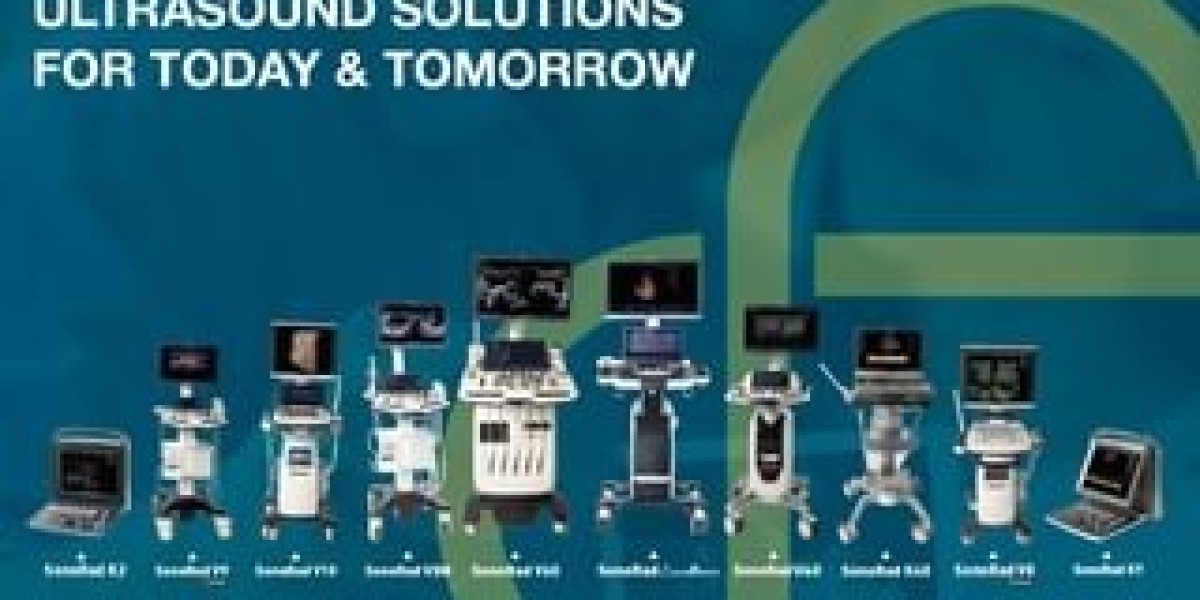Ultrasound technology has revolutionized the way medical diagnostics are conducted. It provides real-time imaging, is non-invasive, and plays a vital role in various medical fields, including gynecology, cardiology, radiology, and urology. As healthcare demands rise across the country, the need for high-performance and cost-effective ultrasound systems has become increasingly crucial.
This article examines the key factors that impact the cost of these diagnostic tools and how medical professionals can determine the most suitable ultrasound machine price in India to achieve their clinical and financial objectives.
The Role of Ultrasound in Modern Medicine
Ultrasound machines are widely used for imaging soft tissues and internal organs. They are particularly helpful for:
Pregnancy monitoring and fetal imaging
Detecting abnormalities in organs such as the liver, kidneys, and heart
Guiding procedures like biopsies and fluid drainage
Assessing blood flow using Doppler technology
Given the non-radiative and non-invasive nature of these systems, they remain a preferred choice for diagnostics, both in urban hospitals and rural healthcare centers.
Understanding the Ultrasound Machine Cost
The ultrasound machine can vary widely based on several factors. Healthcare providers need to understand these variables before making a purchase.
1. Type of Technology
Ultrasound systems come in a variety of configurations:
Black and White (B/W) Systems: Basic units designed for general imaging in small clinics.
Color Doppler Machines: These provide enhanced imaging by capturing blood flow and are widely used in cardiac and vascular diagnostics.
Portable Ultrasound Systems: Lightweight and mobile, they are excellent for emergency rooms and rural outreach programs.
3D/4D Imaging Units: Used predominantly in prenatal diagnostics for clear and dynamic imaging.
The more advanced the imaging features, the higher the cost is likely to be.
2. Imaging Capabilities
High-resolution imaging, elastography, real-time 3D/4D scans, and AI-assisted measurements increase both performance and price. Machines with basic imaging functions cost less but may not meet the demands of high-volume or specialized practices.
3. Transducers and Probes
Each machine may come with one or more probes. The cost increases depending on the type (linear, convex, phased array, etc.) and quantity of probes included.
4. Software and Processing Power
Advanced software with automated features, faster image processing, and diagnostic tools will add to the overall price but can significantly improve workflow and diagnostic accuracy.
5. After-Sales Support
The total investment goes beyond just the machine. Warranty coverage, technical support, training, and easy access to spare parts should be considered part of the cost structure.
Average Price Range in India
Here’s a general overview of the expected price range for different types of machines in the Indian healthcare market:
Machine Type | Estimated Price (INR) |
Basic Black & White | ₹3 – ₹7 Lakhs |
Mid-Range Color Doppler | ₹8 – ₹15 Lakhs |
High-End Doppler/3D/4D | ₹15 – ₹30 Lakhs+ |
Portable Ultrasound Units | ₹5 – ₹15 Lakhs |
Please note that these prices are approximate and can vary based on configurations, accessories, and brand support.
Tips to Identify the Best Ultrasound Machine Price in India
Choosing the right product requires careful evaluation of clinical needs, patient volume, and long-term operational goals. Here are some expert recommendations:
1. Define Clinical Requirements
Determine the departments that will use the machine. For example, a basic model might be sufficient for general practice, while a gynecology clinic may require high-resolution 3D/4D imaging.
2. Consider Patient Volume
For high-volume diagnostic centers, systems with faster processing, durable hardware, and multiple probes are a better fit. This can justify a higher initial cost with better long-term ROI.
3. Evaluate Software Features
Look for machines with automated measurements, customizable presets, and clear user interfaces. This minimizes manual work and enhances diagnostic efficiency.
4. Plan for Maintenance
Check the availability of after-sales service, service centers, and technical support. Opt for vendors that offer long-term service contracts and training for your clinical team.
5. Compare Across Models
Take time to compare at least three models within your budget range. Focus not just on price, but also usability, upgrade options, and warranty support.
Long-Term Benefits of Investing in Quality
While entry-level systems are tempting for their lower pricing, they may lack essential features or scalability. Investing wisely ensures:
Reduced Maintenance Downtime
Consistent Diagnostic Accuracy
Higher Patient Satisfaction
Compliance with Healthcare Standards
This is especially important for hospitals and diagnostic chains planning to scale their operations or expand into specialized services.
Cost-Efficient Options for Growing Clinics
For smaller clinics or practitioners operating in semi-urban or rural settings, portable units and black & white machines offer the perfect balance of affordability and functionality. These systems are compact, user-friendly, and ideal for general screenings and point-of-care usage.
Conclusion
When it comes to diagnostic imaging, choosing the right machine is a critical decision for any healthcare facility. The ultrasound machine cost should be evaluated in relation to clinical utility, imaging quality, operational ease, and long-term serviceability. For those seeking the best ultrasound machine price in India, it’s not just about the lowest figure, but about achieving the highest value.
Whether upgrading an existing unit or investing in a first-time purchase, healthcare providers must focus on quality, reliability, and support. With informed decision-making and careful comparison, it’s entirely possible to secure a system that offers excellent imaging capabilities while staying within budget.







